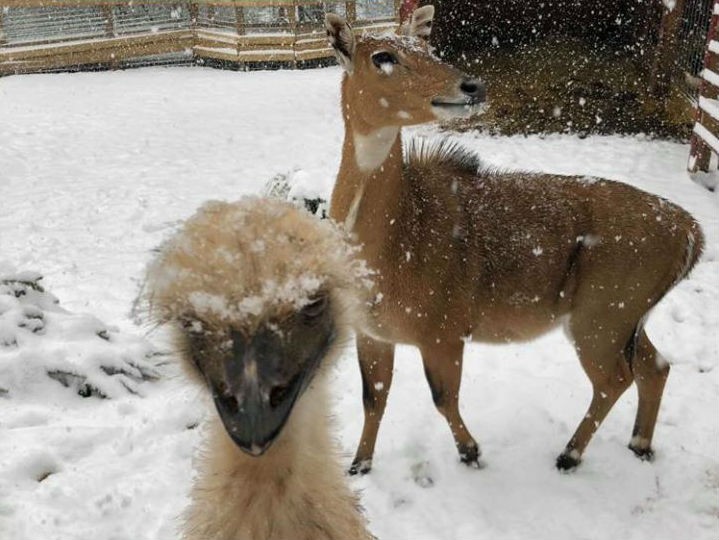A week ago most of Northeast Georgia was covered in several inches of snow. Many people put on their coats and gloves, pulled their sleds out of the closet and went outside to play. And after a bit, when their noses had turned red and their hands had begun to tingle from the cold, they came back inside to warm up. But what about the animals? How do they fend for themselves during very cold temperatures and snowfall?
At the North Georgia Zoo in Cleveland, zookeepers spent the day making sure that their animals were well taken care of. Of course, some animals are built for the cold and snow. Wolves, lynx, sheep, goats, llamas, Scottish Highland cattle are just a few of the species at the zoo that enjoy the cold temperatures and the snow.
Other species, though, need some help to navigate the cold weather, and the zookeepers know just what to do.
All animals at the zoo have shelters where they can retreat from the weather. But, snow must be pushed off enclosures. Straw is placed on the floor of the shelter to provide a layer of warm insulation for the animals to lay on. Heat lamps are placed in enclosures of the animals (such as lemurs, coatis, pacas, etc.) that need some extra warmth.
Keepers check on their animals throughout the day. They break up ice in the animals’ water containers so that they can stay hydrated. The animals are fed, which helps them maintain their body temperature. They are monitored regularly so that any need can be taken care of immediately. Electricity and water pipes must be checked around the clock. It’s hard, cold work, but the keepers place the welfare each animal above their own comfort.









